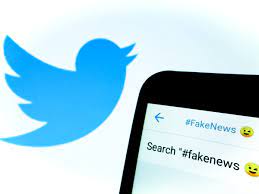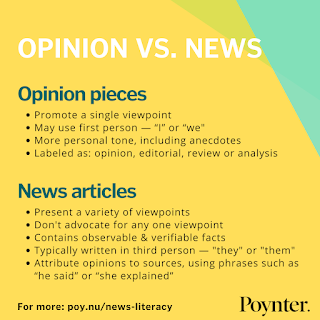 |
| Photo provided via NBC News. |
Buzzfeed, once seen as a place of only taking quizzes and reading about top gossip, is now working to become a more trusted news source for audiences to turn to. Buzzfeed is used to be seen as a resource for entertainment now is trying to change its reputation.
As journalism grows online, finding the division between what classifies as fake news and what classifies as truthful can become blurred. However, understanding the difference between fact and opinion is a place to start.
Fact vs. Opinion
Opinion-based writings are prevalent in today's media climate. These opinions can be based on conspiracy or morals. However, with readers eager to stay in the loop or even share their opinion, which may disagree with others, these stories can be misleading. However, through many efforts, media outlets attempt to dismantle this problem from within.
A Poynter article by Eliana Miller pointed out how in print, it can be pretty obvious what is an opinion and what isn't, but online, the difference isn't as straightforward. That comes from a lack of labeling an opinion and what's not. Miller's article reads, "Confusion fuels readers' complaints that opinions, political agendas, and bias are creeping into reporters' work."
The lack of clarity keeps confusion in the hands of audiences.
The difference between fact and opinion is shown in the Poynter article by highlighting the differences between opinion pieces and news articles. Opinion pieces tend to be one-sided with one view, whereas news articles are meant to show every perspective – this is the most prominent detail to keep in mind.
Why do audiences not care?
In a Washington Post article by Callum Borchers, fake news has now lost all meaning. A lot of the throwing around of the phrase "fake news" was started when Donald Trump took office and started using social media as an outlet, especially Twitter.
Borchers said people on social media even started classifying stories that issued a correction as "fake news"; it became such an easy term to through around. The flexibility and utter disregard for the actual meaning of this phrase has made arguments or disagreement nonexistent, for they'll just get shut down by a simple "that's fake news."
Social media is accessible; it's a place for everyone to share their opinions, nothing is stopping them.
People's lack of understanding of the difference between fact and opinion statements has also caused further controversy. Also, facts one doesn't like are not fake news.
 |
| Photo provided by The Conversation. |
Why should audiences care?
An article from Pew Research Center noted, "those with high political awareness, those who are very digitally savvy and those who place high levels of trust in the news media are better able than others to identify news-relates statements as factual or opinion accurately."
Politics are at the forefront of the misinterpretation of news, and social media's biases are right along with it.
There should be a want to understand media posts online so people can better understand the meaning of fake news, for it is ruining the reputation of journalists. Journalists take time to make sure they efficiently write their stories.

No comments:
Post a Comment